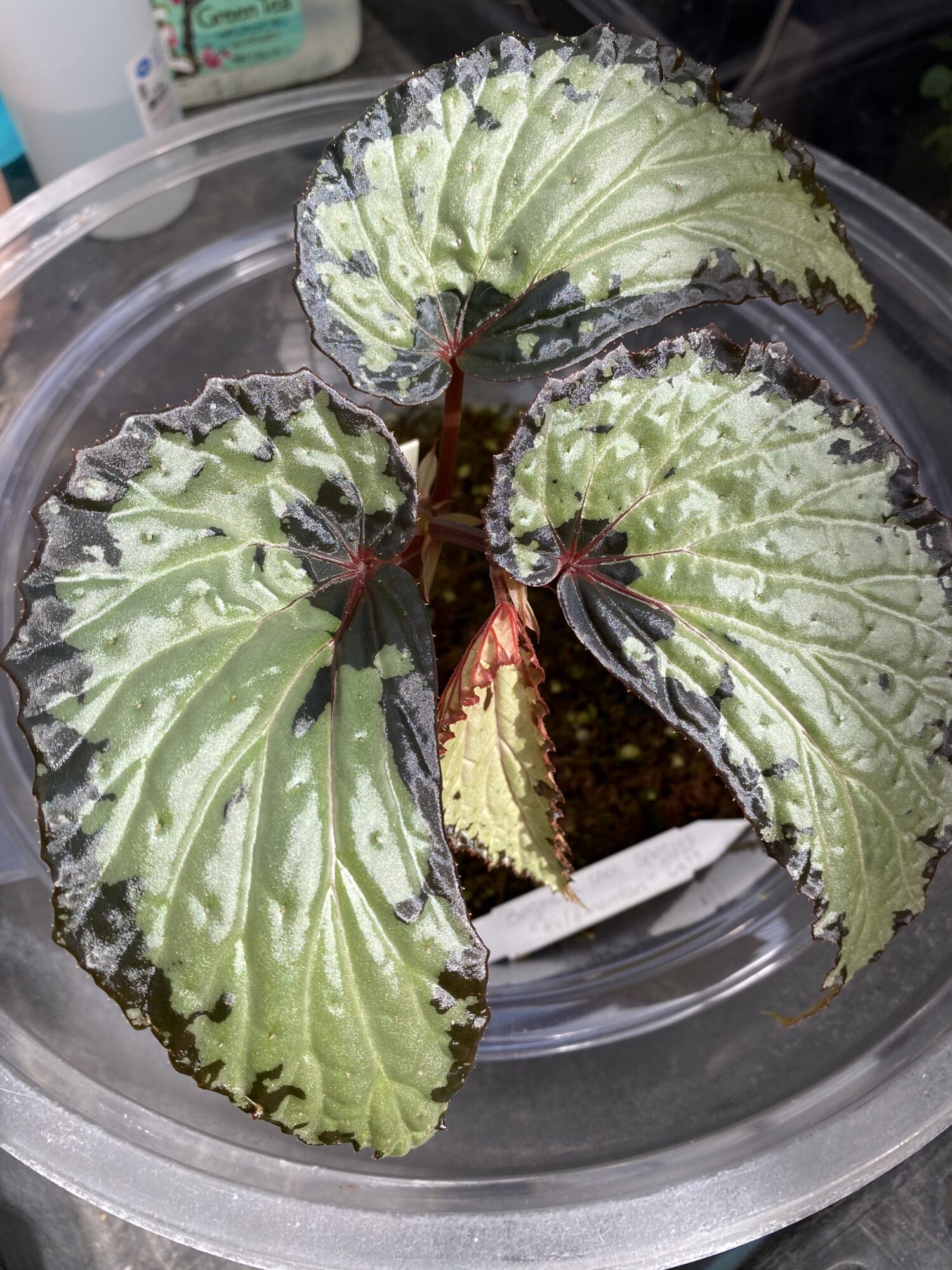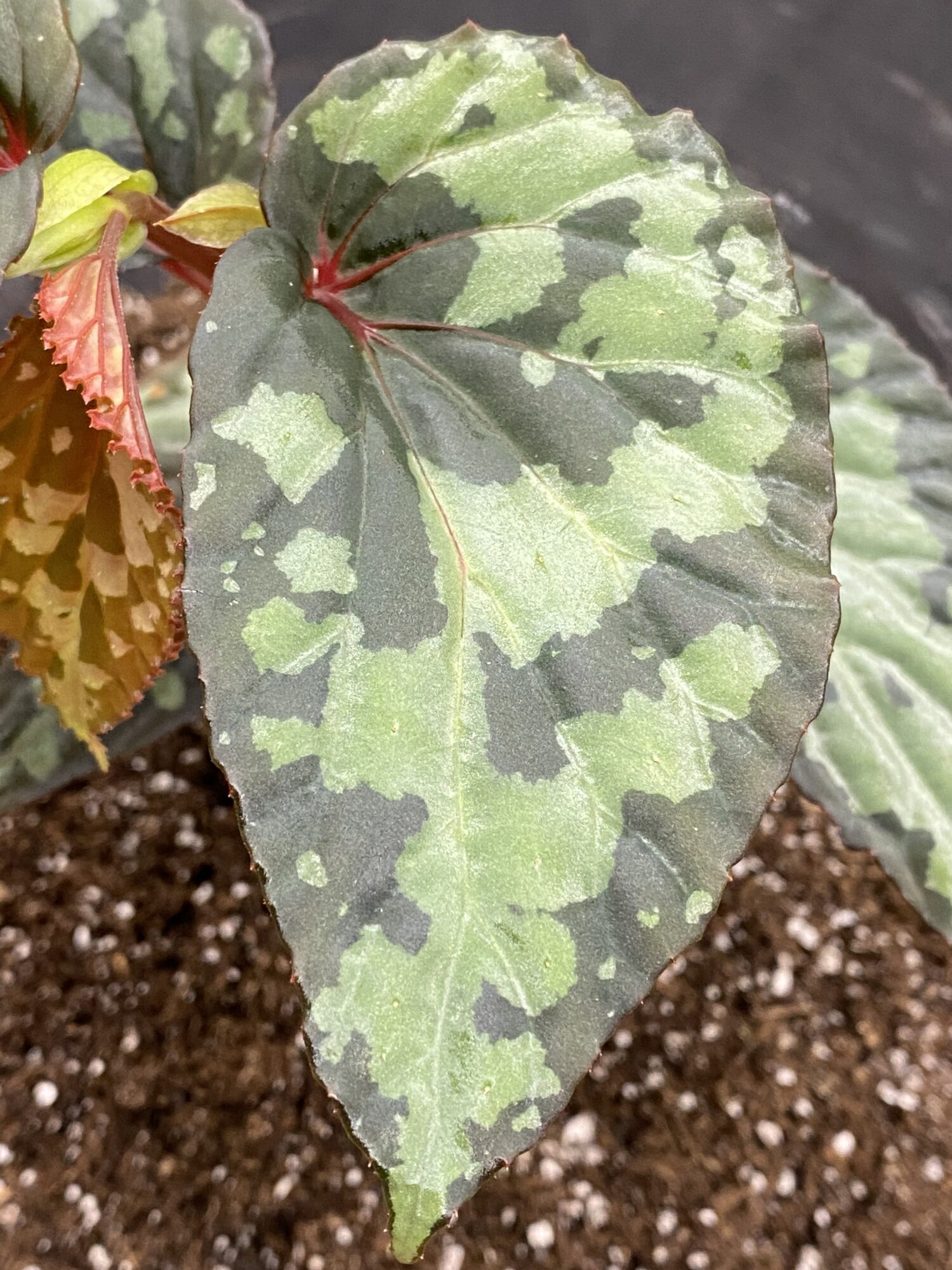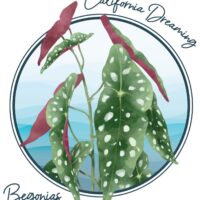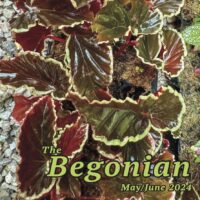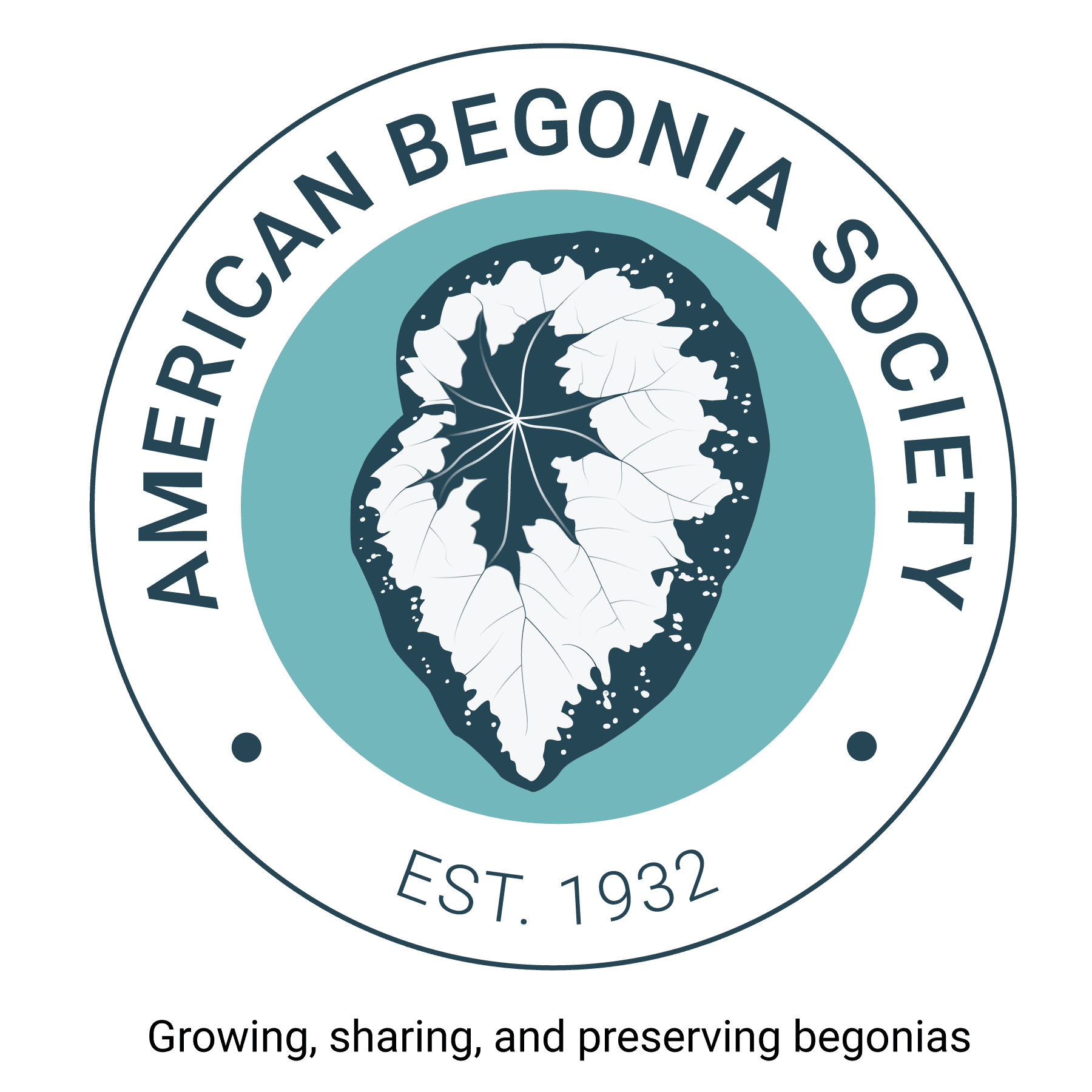Begonia U679 was assigned February 12, 2021, and is a shrub-like species with upright growth from the Kapuas Hulu area of West Kalimantan in Indonesian Borneo. The stems and petioles are deep red. This color is also seen in the primary veins where the leaves attach. The lanceolate leaves are variable in thickness, width and color, ranging from silver with a wide chocolate brown margin to chocolate brown with gray-green blotches. The leaf margin vary from almost smooth to serrated to dentate, often changing with growth, and differing from one side of a leaf to the other. The female flowers develop first and the tepals and capsule are bright green. The Glossary on the ABS website describes all of these terms for you. This species has been circulating as “Kapuas Hulu,” “Kalimantan sp.” and “Kalimantan type I.” It requires high humidity and is best grown in a terrarium. Randy Kerr, ABS member and a Co-chair of the U Number Committee, has found that a composted peat-based substrate with added chunky perlite works well for growing B. U679.
So, what is a U Number? The American Begonia Society created the Unidentified Begonia Species List to institute a uniform numbering system for unidentified species that are in cultivation. The species is labeled and grown under this number until its proper name is determined, or else it is given a name by a botanist. The U Number Committee is made up of an international group of ABS members. In the May/June 2022 Begonian, the committee announced and described begonias U667 and U679 to U683. Enjoy learning more about Unidentified Begonia species and some of the earliest U Numbers assigned.

